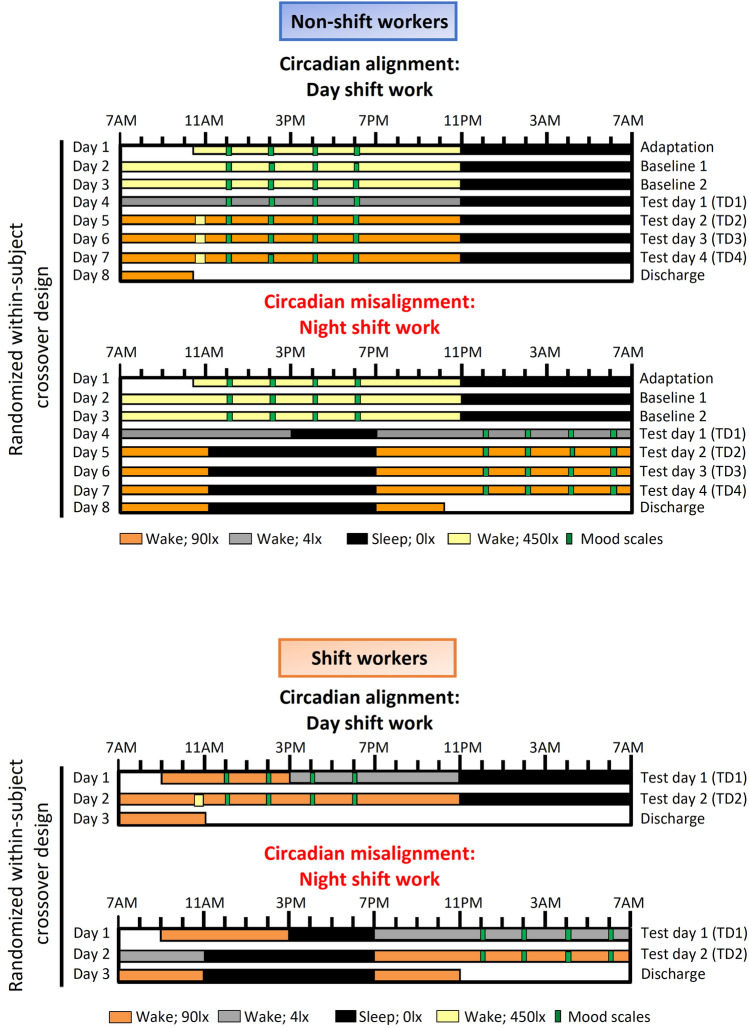Figure 2.
Within-subject, randomized, crossover study design. Upper panel: Non-shift workers underwent circadian alignment and misalignment. For alignment condition, scheduled sleep times remained 11 p.m. to 7 a.m. across all days, whereas for the misalignment these timings were inverted by 12 h after Baseline 2 (Day 3). T1–T4 corresponds to test days 1–4. During baseline days for both aligned and misaligned conditions, computerized mood scales were conducted at 12 p.m., 2 p.m., 4 p.m. and 6 p.m. These timings are: (1) outside of the window of sleep inertia effects following awakening; and (2) hours before participant’s scheduled sleep, when they are expected to be alert. While these times were the same throughout the aligned condition, in the misaligned condition the times were inverted by 12 h for T1–T4 relative to clock time, while maintaining the same time relative to the sleep/wake cycle. Bottom panel: Shift workers underwent circadian alignment and misalignment conditions that were conceptually similar to Experiment 1, such that scheduled sleep times were maintained between 11 p.m. to 7 a.m. in the alignment condition, whereas the times were inverted by 12 h in the misaligned condition. Both experiments had the same computerized mood scales.

